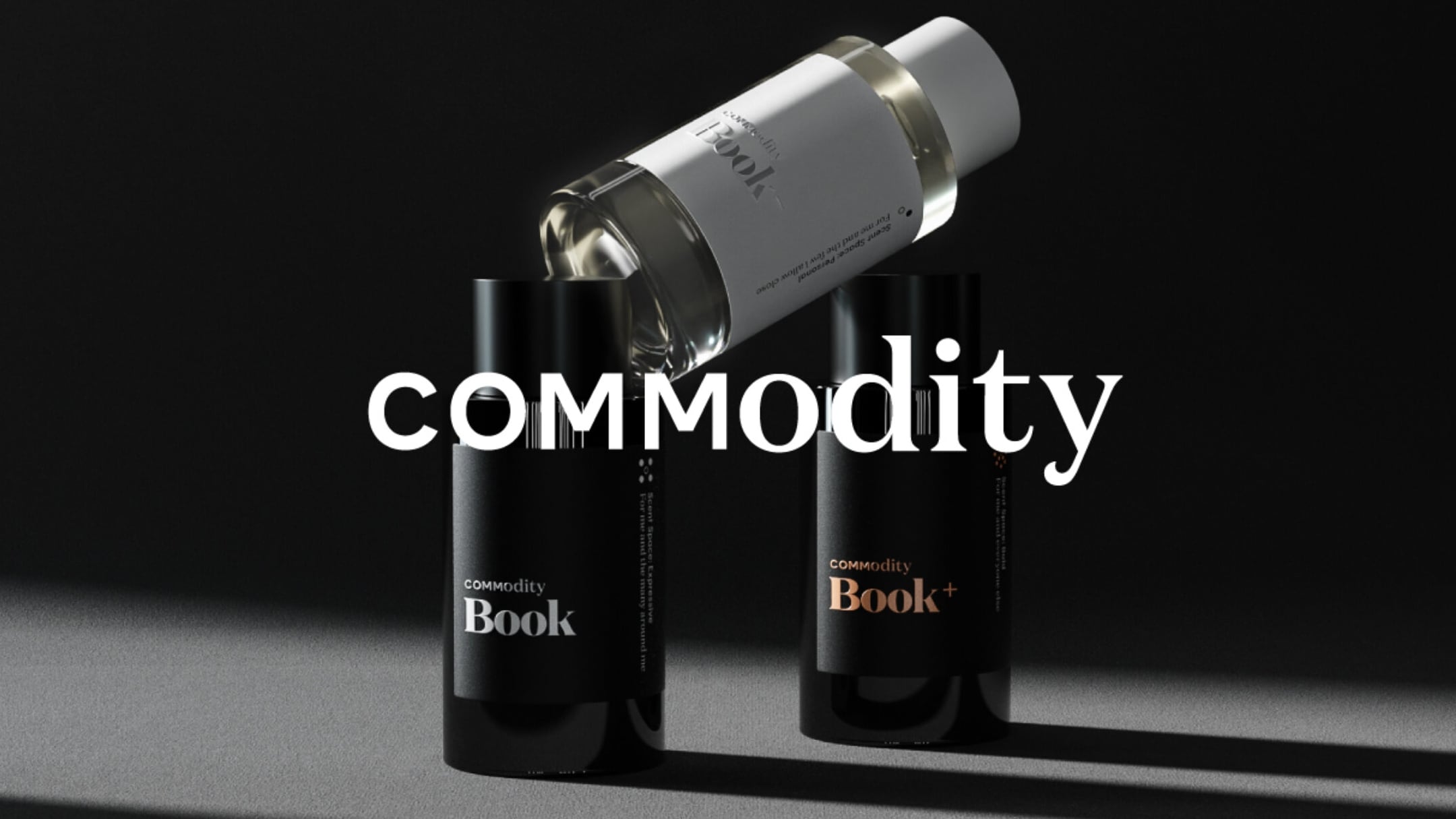The brand was started through a crowdfunding campaign in 2014 and, after changing hands a few times, was acquired by the owner of distributor Europerfumes in New Jersey Vicken Arslanian in 2019.
Arslanian told CosmeticsDesign the brand embarked on a rebrand when he discovered it had undergone a partial rebrand under its previous owners and had extremely limited stock.
“While we respected the rebrand that the former owners had proposed, we wanted to have a second look,” Arslanian said. “That second look took us down a rabbit hole that, fortuitously, ended up where we are today.”
Partnered with ico Design, Commodity not only looked to zero in on modern consumer desires but reevaluated how it spoke about fragrance to American consumers.
Turning away from “Europe-focused” fragrance terms
Vivek Bhatia, creative director at ico Design, said one of the major branding changes Commodity made was turning away from traditional French fragrance terms like “eau de toilette” and “eau de parfum.”
While most premium fragrance consumers may fully understand what those terms mean, the average American consumer may only have a vague understanding of traditional fragrance terminology, if at all, Bhatia said.
To address that issue, Commodity created a system built around the projection. Arslan said the fragrances are now categorized into the following categories, known as scent trios:
- Personal: For you and people near you
- Expressive: For many people around you
- Bold: For everyone in the room
“The main idea behind Commodity was to differentiate the brand by having an outward-facing POV that fragrance is often overly complex,” Bhatia said. “Commodity is doing away with the smoke and mirrors, the lifestyle clichés and industry jargon that surrounds fragrance.”
Building a brand around the modern consumer
Beyond language, modern consumers have adjusted their expectations and desires of fragrances, Bhatia said.
One way Commodity is meeting modern expectations is by removing gender from the description and classification of their fragrances. While darker scents are traditionally masculine and fresher, lighter scents are worn by women, Bhatia said modern consumers may not be as attached to that binary.
Bhatia also said the role of fragrance has shifted, possibly as a symptom of the health and wellness focus brought to personal care by the pandemic. In Practice, that means a transition from story-telling to functions like calming or energizing in developing fragrance.
Arslanian said making these changes is in an effort to bring the niche parts of Commodity which made the brand a cult favorite into a more accessible space in order to bring scents outside of the “‘best-selling’ fragrance notes” to consumers.
“Commodity is intrinsically about contradictions and dualities,” Arslanian said. “It’s neither niche nor commercial, expensive nor cheap. From an olfactory point of view, I would say that Commodity’s goal is to bring artisanal fragrance to a wider, more commercial audience.”
The brand is now working with ico Design to create a retail space in New York City.




